The
Habsburg
Show
In the imperial theater you can see the Habsburg family come to life before your very eyes!
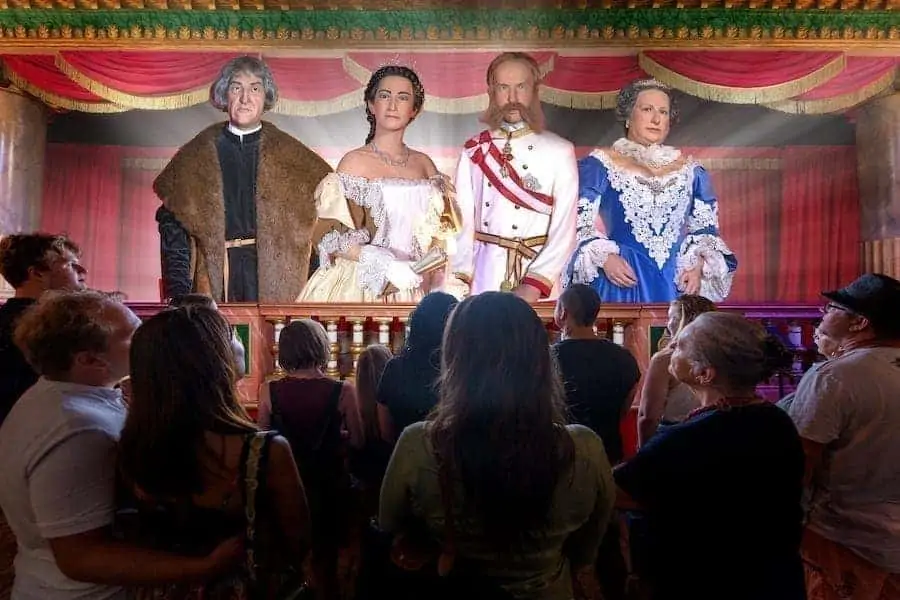
Sisi, Franz and Co
On a stage modelled on the Schönbrunn Palace Theatre, Sisi, Franz Joseph, Maria Theresa and Emperor Maximilian talk about everyday imperial life with a great deal of wit and humor. What was the recipe for success of the individual rulers and who founded the Habsburg marriage policy? Find out more about the 640-year history of the Habsburg monarchy in Austria and get to know the Habsburg family tree in an entertaining way. The imperial family awaits you for a personal audience.

Who were the Habsburgs?
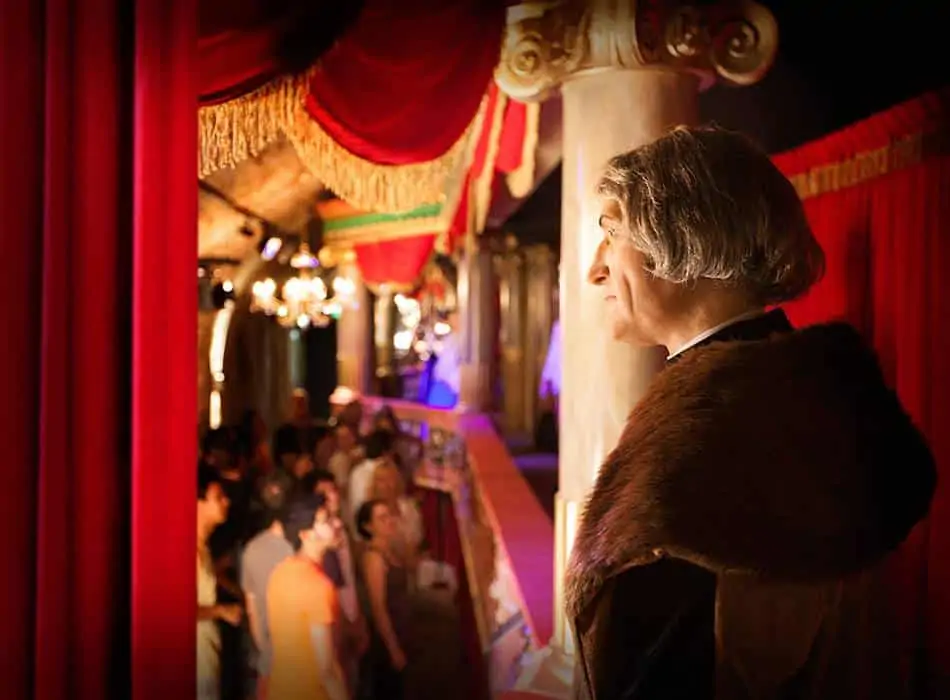
The beginnings of the House of Habsburg (1278 – 1918)
The name Habsburg goes back to the Habichtsburg, the ancestral castle of the Habsburgs, in the Swiss canton of Aargau. Count Rudolf of Habsburg was the first Habsburg on the throne of the Holy Roman Empire. In 1273, the princes of the empire elected him Roman-German king. The Habsburg family tree therefore begins with Rudolf I of Habsburg. With him, the Habsburg dynasty moved from its ancestral home in Switzerland to the Danube region. Rudolf I established 640 years of rule in Austria in 1278 after the successful battle of Dürnkrut against the Bohemian King Ottokar II. The end of the Habsburg monarchy is dated to 1918 when the First World War was lost and Austria became the First Republic.
The Habsburgs of the late Middle Ages
Austrian and Spanish line (1450 – 1700)
Frederick III succeeded in establishing the dynasty among the European powers. His son Maximilian I was the founder of the successful Habsburg marriage policy. Maximilian I’s famous motto was: “May other countries wage wars, you happy Austria marry.” Maximilian was married to the rich and only heiress – Mary of Burgundy – and so these lands, including the rich Netherlands, came to Austria. The Habsburgs also ruled Spain, Bohemia and Hungary. Maximilian’s grandson – Charles V – ruled over a world empire in which the sun never set. Charles V was exposed to a power struggle with France and a religious war with Martin Luther. After Charles V abdicated, the dynasty was divided into two lines, a Spanish and an Austrian line. His brother Ferdinand received the Austrian hereditary lands, Bohemia and Hungary. He was constantly busy fending off the Ottomans. Charles’s son – Philip the Fair – founded the Spanish line. This created the basis for Austria’s rise to become a major European power. There were close ties between the two lines in the form of intermarriage, which led to the loss of ancestors and degeneration. The Spanish line died out in 1700. Following their defeat in the War of the Spanish Succession (1701-14), the Habsburgs were only able to dispose of the southern Netherlands, Naples and Milan, while Spain was lost.
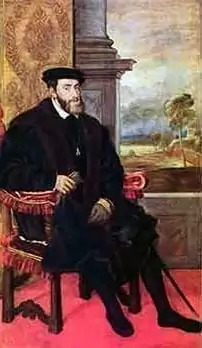

Which rulers were there?
Important rulers from the Baroque period to the Biedermeier era (1700 – mid-19th century)
Emperor Charles VI, who had no male heirs, issued the “Pragmatic Sanction” in 1713. It declared the Habsburg hereditary lands indivisible and secured the throne for his eldest daughter Maria Theresa. Maria Theresa’s marriage to Franz Stephan of Lorraine established the Habsburg-Lorraine dynasty and ensured the continuation of the dynasty thanks to her 16 children. She gave birth to 11 daughters and 5 sons, although only ten of the children reached adulthood. These were married off to leading noble houses throughout Europe. One of her most famous daughters was Marie Antoinette, who was executed during the French Revolution. Maria Theresa ruled from 1740-1780, reorganized the state budget and introduced many innovations, including compulsory education. The Habsburgs used Schönbrunn Palace as their summer residence. In 1804, their grandson Franz proclaimed the Austrian Empire. Two years later, under pressure from Napoleon, he dissolved the Holy Roman Empire of the German Nation after almost a thousand years. He was succeeded by his first-born son, Ferdinand I, the Benevolent, who, however, suffered from epilepsy and was not really fit to rule. State Chancellor Metternich and his system set the tone during this period. It was the period of the Vormärz from the Congress of Vienna in 1815 to the March Revolution of 1848.
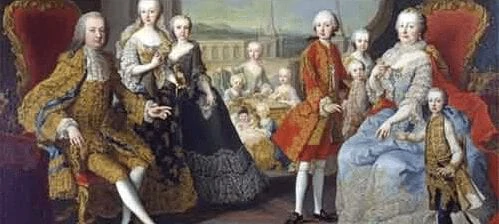
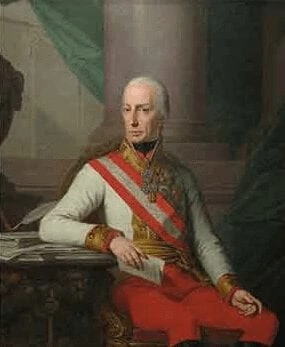
Emperor Franz Joseph the 1st
The reign of Emperor Franz Joseph I until the end of the monarchy (1848 – 1918)
In 1848, Emperor Franz Joseph I – the great-great-grandson of Maria Theresa – ascended the throne. His time was marked by many political defeats. The Battle of Königgrätz in 1866 bore witness to this, when the Habsburgs disappeared from the map of Germany as a whole. In 1867, a settlement was reached with Hungary and the Habsburg Empire was renamed the Austro-Hungarian Dual Monarchy. The Habsburgs remained kings of Hungary until they were deposed at the end of the First World War in 1918. Emperor Franz Joseph I, the penultimate emperor, reigned for 68 years, longer than any other member of the dynasty before him. He died at the age of 86 in November 1916 in the middle of World War I. His beloved wife Elisabeth, better known as Sisi, was only by his side at first. She preferred warmer climes and tried to avoid the strict ceremonial of the Viennese court. Together they had four children, three daughters and one son. Their only son, Crown Prince Rudolf, committed suicide at a young age together with his mistress Mary Vetsera. This went down in history as the tragedy of Mayerling.

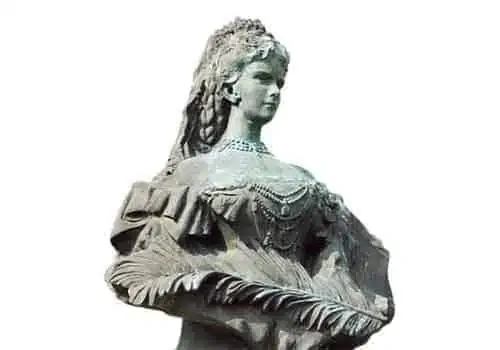
Until the beginning of the 20th century, the Habsburgs held together the multi-ethnic state with a population of around 51 million inhabitants in 13 countries. The assassination of the heir to the throne Franz Ferdinand in Sarajevo on June 28, 1914 was one of the triggers of the First World War, which lasted from 1914 to 1918. The last Habsburg emperor was Karl I, the great-nephew of Franz Joseph I. Karl reigned for just two years from 1916 to 1918, i.e. until the end of the monarchy. He was sent into exile in Madeira together with his wife Zita, as he never officially abdicated as emperor. In 1918, the reign of the House of Habsburg-Lorraine ended after 640 years with the defeat in the First World War. The First Republic was proclaimed in Austria in November 1918.

The plague pit
